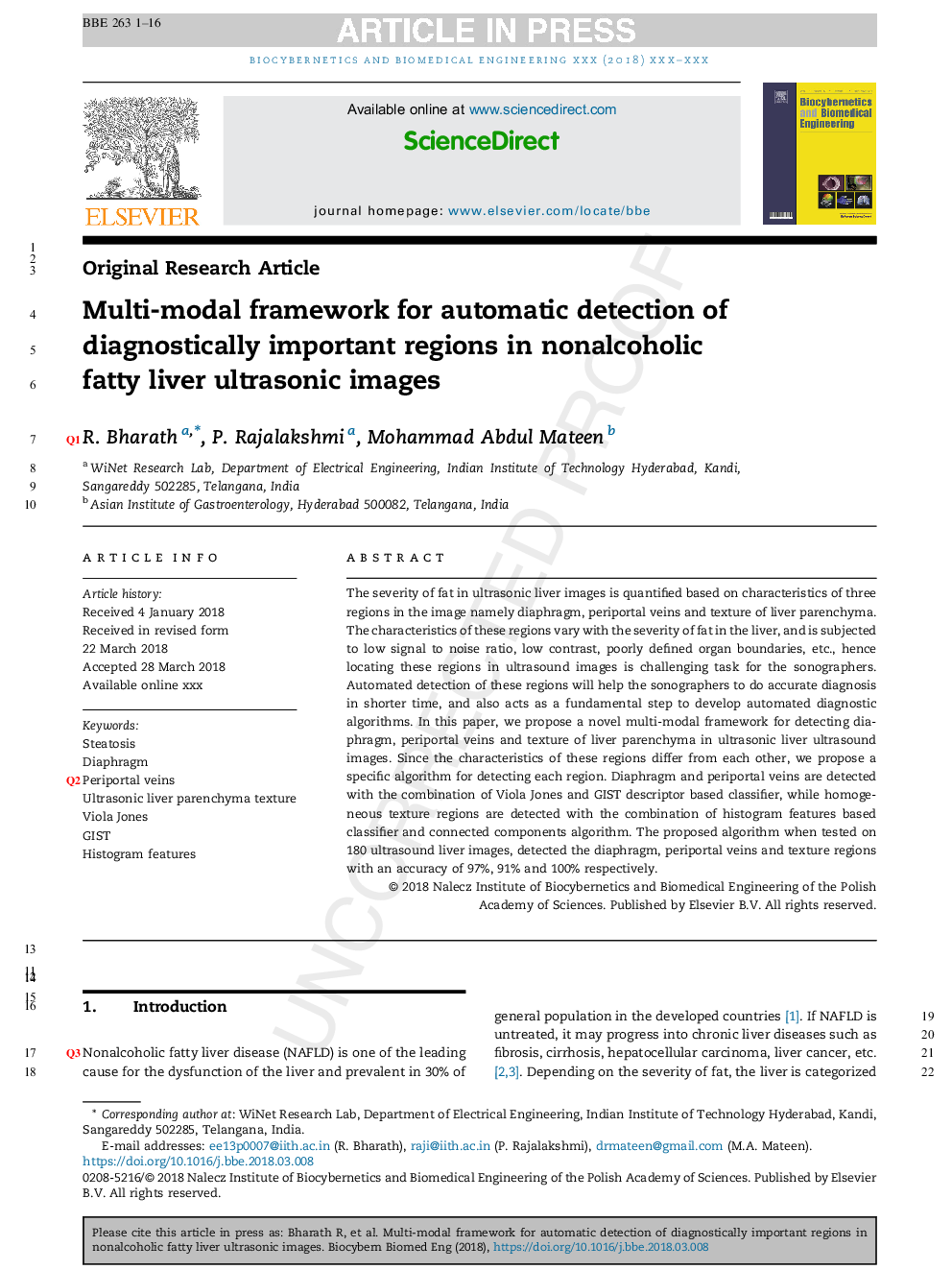| Article ID | Journal | Published Year | Pages | File Type |
|---|---|---|---|---|
| 6484141 | Biocybernetics and Biomedical Engineering | 2018 | 16 Pages |
Abstract
The severity of fat in ultrasonic liver images is quantified based on characteristics of three regions in the image namely diaphragm, periportal veins and texture of liver parenchyma. The characteristics of these regions vary with the severity of fat in the liver, and is subjected to low signal to noise ratio, low contrast, poorly defined organ boundaries, etc., hence locating these regions in ultrasound images is challenging task for the sonographers. Automated detection of these regions will help the sonographers to do accurate diagnosis in shorter time, and also acts as a fundamental step to develop automated diagnostic algorithms. In this paper, we propose a novel multi-modal framework for detecting diaphragm, periportal veins and texture of liver parenchyma in ultrasonic liver ultrasound images. Since the characteristics of these regions differ from each other, we propose a specific algorithm for detecting each region. Diaphragm and periportal veins are detected with the combination of Viola Jones and GIST descriptor based classifier, while homogeneous texture regions are detected with the combination of histogram features based classifier and connected components algorithm. The proposed algorithm when tested on 180 ultrasound liver images, detected the diaphragm, periportal veins and texture regions with an accuracy of 97%, 91% and 100% respectively.
Related Topics
Physical Sciences and Engineering
Chemical Engineering
Bioengineering
Authors
R. Bharath, P. Rajalakshmi, Mohammad Abdul Mateen,
